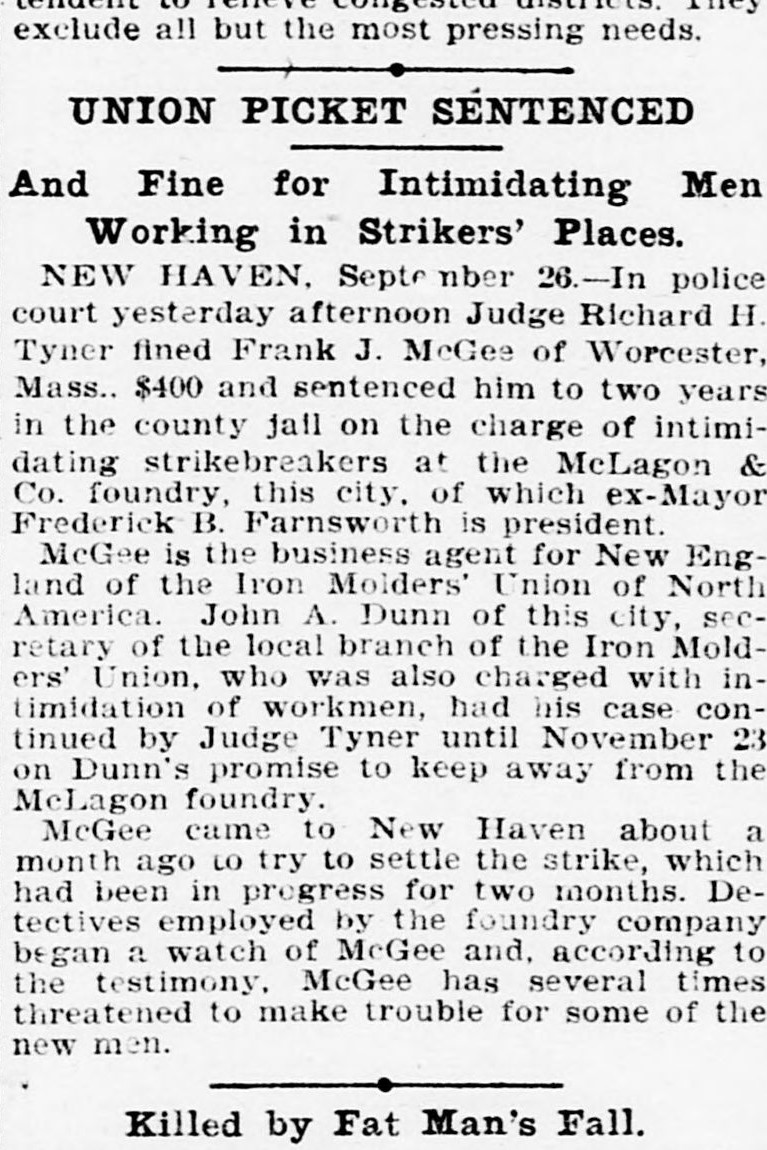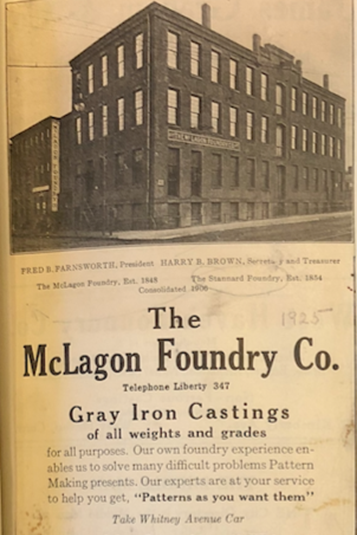The McLagon Foundry (1924)
From the mid 19th to mid 20th century, this neighborhood -- which would later become the Audubon Arts District -- was a major New Haven industrial center. The McLagon Foundry was built on this site in 1848, the year the Farmington Canal closed for business and fully transitioned to railroad use. At the time, the area around the new foundry was still dense woods, but soon it would become home to the Andrew B. Hendryx Co. (“manufacturers of birdcages and metal goods”), A.A. Ball & Co. (“iron railings etc.”), the F.D. Butricks Steam Engine Manufacturers, the New Haven Folding Chair Co., and the New Haven Manufacturing Co.
The McLagon Foundry cast metal products used throughout Connecticut: anchors, parts for ships and bridges, tools for the Whitneyville Armory, dies for the first stone crushing machines, machinery for the Diamond Match Company, and much more. The foundry had its share of turmoil -- including strikes in 1907 and a devastating fire in 1911 -- and would eventually closed its doors in the 1960s. Yet its work survives to this day: If you keep your eyes peeled, you can still spot the McLagon name on the iron fences that surround the New Haven Green, and on many of the manhole covers throughout the city.


In its early days, the foundry operated a dock next to Hillhouse Basin, where it would receive shipments of pig iron brought down the canal from upstate. But the canal quickly gave way to the railroad as the primary method of transporting goods throughout the interior of the state. And by 1924, when New Haven’s population plateaued, the city was already in the midst of a transportation revolution. The trolley that ran past the foundry and up Whitney Avenue was facing new competition in the form of a public bus. The New Haven Manufacturing Co. across the street had been replaced by the Driggs Ordnance Co., which built automobile engines. And as steam power gave way to the internal combustion engine and manufacturing became less dependent on sea and rail, New Haven and other industrial cities like it would soon face the existential question of how to fill the gap that the factories would leave behind.